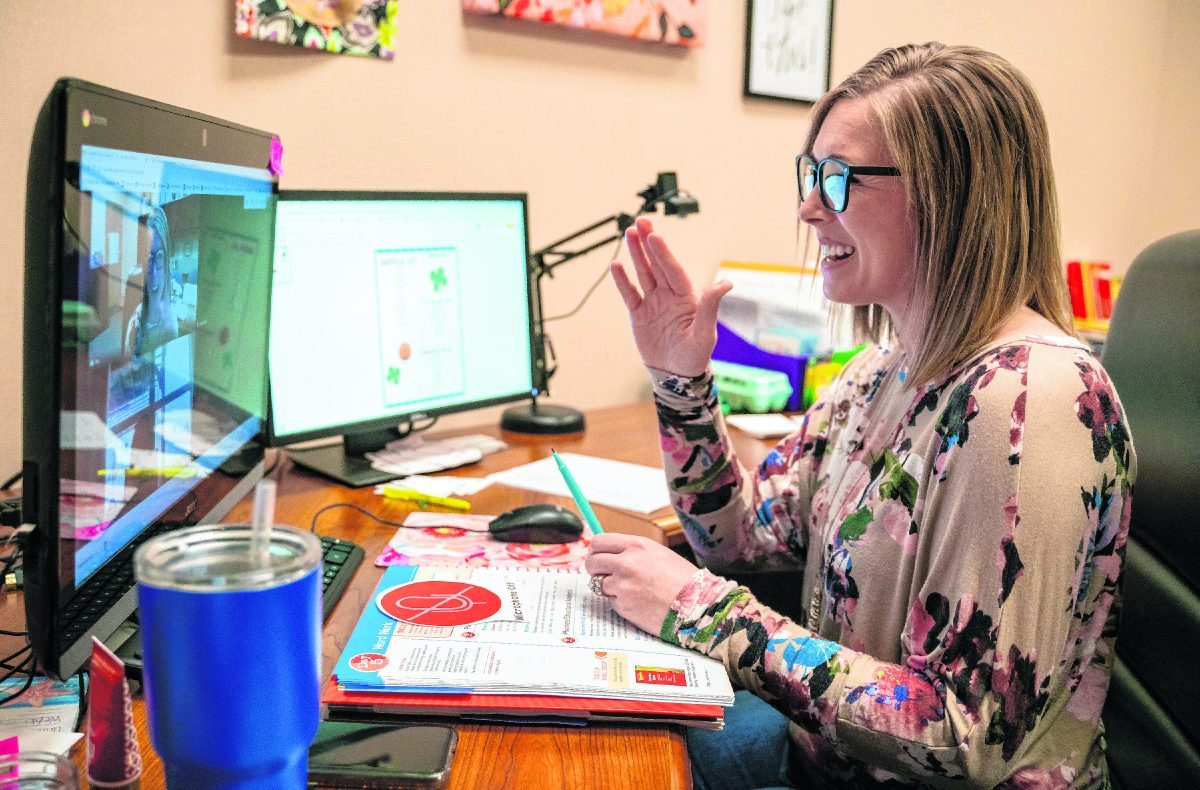Students at all Johnson County schools returned to a full-time schedule this month.
For thousands of students across Johnson County, however, the week was no different than others. For those students, a desk in a classroom is as distant as March 2020, when schools initially closed their doors due to the coronavirus pandemic. Now, the possibility of a COVID-19 vaccine means most students could return to classrooms. Still, some chose not to.
At Franklin Community Schools, there are 255 virtual students at the elementary level. For students that age, the key is to replicate what children would experience in school as closely as possible, said Carolyn Ray, who teaches virtual second graders at Franklin schools.
“We’re trying to make it the closest to (classroom learning) in a virtual environment,” Ray said. “We’re still singing calendar songs, ‘happy birthday,’ when someone loses a tooth we mark it in the calendar. It’s an important part of the virtual community because some students are not interacting with their peers outside the online community. We play games, sing songs. It’s a time to interact with peers, which they maybe can’t do as much right now.”
Part of molding students into effective learners involves not just academics, but a spirit of togetherness, even with those students who are not physically present, said Megan Greene, who teaches virtual third and fourth graders.
“The virtual environment brings challenges, but it can be done,” Greene said. “We have live morning meetings with the schedule and objectives, but there’s time for togetherness and to build a culture as a family. I’m not always talking academics; we talk, laugh, share, all with social-emotional learning goals in mind.”
At the middle school level, students take four classes: English language arts, math, social studies and science. Often, it takes more than a software to make sure students are staying on track, said Anne Wilson, coordinator of the Apex Learning online program at Franklin Community Middle School.
“It’s hard but doable. It’s phone calls, emails and Google Classroom with parents and students,” Wilson said. “They’re in school for three hours and when they’re done with a class I can assign another class. It’s very powerful for eighth graders.”
The 224 Franklin Community High School students who learn virtually also use the Apex program. In high school, however, there is more variation in courses, with 85 different offerings. Teachers have to work together to address students’ questions and concerns, and to unlock tests so students can take them. Since the start of the school year, Franklin high school teachers have unlocked more than 5,000 quizzes, said Eric Rose, the high school’s only full-time virtual teacher.
“While the classes are self-guided, teachers have to stay involved,” Rose said. “Apex is a good tool, but it’s not ‘push a button and it happens.’ There’s lots of hands-on work required; 20% of students are thriving in the Apex curriculum, and what’s amazing to me. It’s not necessarily students that thrive in the (school) building. Students thriving in Apex have often been distracted in the building.”





